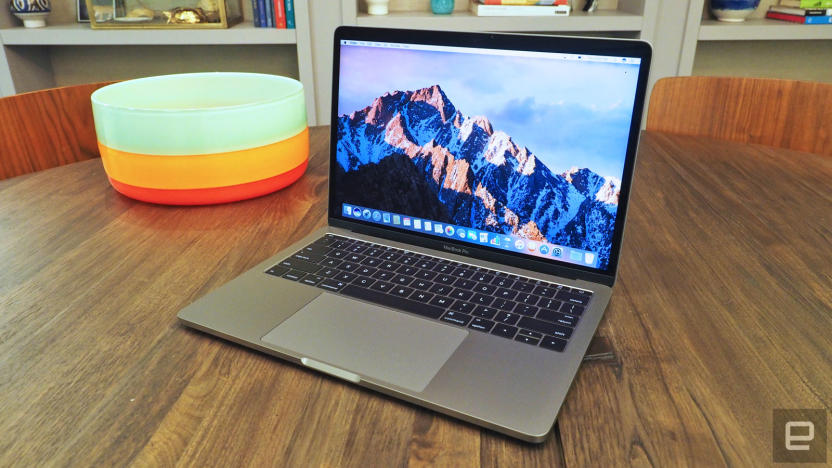bootup
Latest

Apple drops its iconic startup chime from the new MacBook Pros
Aside from the ports that didn't make the cut, there's something else that Apple's taken away from its new MacBook Pro family: the startup chime. Yep, it's taken out the F-sharp chord that accompanies the boot-up whir of previous MacBooks, and that's at least partially because the late-2016 MBPs (all three of them), will turn themselves on and boot up when you open them. So while the power button still turns the machine off, there's no need to use it to turn it on.

Microsoft details Windows 8's pre-boot world, helps you skip the F8 F8 F8 routine
Microsoft has been going into very exacting detail as to how Windows 8 works, but one area it hasn't explored much is what happens before you even see the Start screen. As user experience manager Chris Clark notes, the days of mashing F8 repeatedly to reach a pre-boot configuration are (mostly) over: you can invoke it either through an "advanced startup" in settings, through Start menu shortcuts or, if your PC is truly sick, let it show automatically. At least on systems blessed with UEFI instead of an aging BIOS, you'll get a lot more to tinker with as well, including going straight to the command prompt, recovering from a system image or booting from external storage. The emphasis on choosing your environment before you hit the power button is virtually necessary. A Windows 8 PC with a solid-state drive leaves just a 200-millisecond slice of time for any user input, and Microsoft would rather not have users caught in an infinite loop of restarting their systems as they unsuccessfully try to boot from USB drives. You'll likely discover the pre-boot space first-hand when the OS ships later this year, but for now you can check the source for more.

Windows 8 to feature drastically reduced boot time, shown off in video
Watch the above video closely, because you might just miss the moment: according to the latest post on MSDN's Building Windows 8 blog, Microsoft's next-gen desktop OS will see a hugely improved boot time thanks to a clever technique. Rather than closing both the user session and the kernel session like in a traditional shutdown, Windows 8 will preserve the kernel session on the disk, thus creating a "hiberfile" that's much smaller than that of the usual Windows hibernation -- see the diagram after the break for a clearer idea. The result? An amazingly fast system bootup -- even with the battery removed to begin with -- that claims to be 30 to 70 percent faster than most systems tested by Microsoft. We're itching to test this feature on an SSD ourselves, but until then, you can head over to MSDN's blog for the full technical explanation.

Mac 101: What's happening when your Mac is starting up?
Recently, in the interest of sleeping soundly through the night, I've been turning off my 27" iMac every night. No, I'm not doing this for energy conservation, but the darned thing used to light up at random intervals in the middle of the night. Since I now have to power up the iMac every morning, I see the bootup process regularly. You know how it goes. First you hear the startup chime, then you see that gray screen, then the gray screen with the Apple logo and spinning gear on it, then a light blue screen, and finally a login window or the desktop appears. What's actually going on while all of this is showing up on your screen? Well, as those of us who have gone through the training and tests to become Apple Certified Support Professionals are aware, each of those visual cues is an indication that a milestone in the bootup process has been reached. Follow along as I take you on a tour behind the scenes of the Mac OS X boot process, starting on the next page.

A weekend with FireWire
My MacBook Pro and I had a bit of a rendezvous this past weekend. She's a 15 inch Core Duo with 2GB of RAM. Although she'll occasionally get as hot as a toaster oven (leaving red marks on my lap at times) and mooed like a cow when we first met, she's been a consistent workhorse for me. But her hard drive needed a transplant. Sick of her sluggish performance and hard drive clicking noises, I decided that it was time to fix her up. So, I replaced her 320GB hard drive with, surprise, a 320GB hard drive -- this time a Fujitsu model instead of the Toshiba it replaced. Not because I thought the Fujitsu was any better than the Toshiba it'd be replacing, but because it was the least expensive drive I could find. Although the hard drive installation went successful, it wasn't without its fair share of bumps along the road. Hopefully, the bumps I experienced could provide many some guidance on what to do as well as what not to do when upgrading your hard drive.

Video: SSD-infused Eee PC 1000 boots in 30 seconds
Even with Express Gate installed, it took ASUS' Eee Box a good 35 seconds before an application could be used. On this particular Eee PC 1000, it took around half a minute for the entire system to load. The secret? An ultra-speedy 40GB SSD packed within. Hop on past the break for proof of the feat, but don't blink for an extraordinarily long period of time.[Thanks, Roman]




